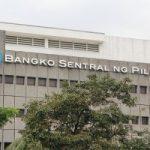THE reserve requirement ratio (RRR) of digital banks will be at 8% and they will likewise be covered by existing prudential requirements for big banks that mandate them to maintain adequate capital and liquidity buffers, the Bangko Sentral ng Pilipinas (BSP) said on Tuesday.
BSP Circular No. 1154, dated Sept. 8 and signed by BSP Deputy Governor Eduardo G. Bobier as officer-in-charge, amends the Manual of Regulations for Banks, Manual of Regulations for Non-Bank Financial Institutions, and Manual of Regulations on Foreign Exchange Transactions to clarify the applicability of prudential requirements to digital banks, among others.
These include rules on capitalization, liquidity, leverage, and reserves, as well as guidelines on corporate governance, technology risk management, cybersecurity, consumer protection, and anti-money laundering (AML), among others.
The circular set digital banks’ reserve ratio, or the percentage of deposits and deposits they must keep with the BSP, 8%. The RRR for big banks is currently at 12%, one of the highest in the region. Reserve requirements for thrift and rural lenders are at 3% and 2%, respectively.
Under the circular, digital banks must meet the same Basel III capital, liquidity and leverage requirements covering universal and commercial banks and they will also be subject to the related reporting requirements.
The Basel III framework contains measures that aim to improve banks’ risk management so they can withstand excessive financial stress. These came in the aftermath of the 2008 Global Financial Crisis.
Universal and commercial banks and their subsidiary lenders have been required to comply with standards under the Basel III framework as adopted by the BSP since 2014.
Under these rules, big lenders are required to have a minimum capital adequacy ratio of 10%, a Tier 1 ratio of 7.5%, and a 6% common equity Tier 1 ratio.
They are likewise mandated to maintain a net stable funding ratio — a measure of the ability of a bank to fund its liquidity needs over one year — of 100% on both solo and consolidated bases, as well as a countercyclical capital buffer set at a maximum of 0% to 2.5%.
The central bank also requires these lenders to have a minimum capital conservation buffer of 2.5% and a liquidity coverage ratio — which mandates big banks to hold high-quality, easily convertible assets to cover potential net cash outflows over a 30-day period — of 100%.
Lastly, they must have a minimum leverage ratio — which represents how much capital banks should have on hand to cover non-risk weighted assets — of 5%.
Meanwhile, under capital rules, the central bank added a section that requires thrift, rural and cooperative banks that primarily offer financial products and services that are processed end-to-end through a digital platform and/or electronic channels under an Advanced Electronic Payments and Financial Services license to maintain a minimum capital of P1 billion, just like digital lenders, and will be given five years to meet the new requirement. They must also submit a capital buildup program to the BSP within six months.
The BSP also set a 25% limit on digital banks’ aggregate investment in equities in all enterprises, in line with those for thrift, rural and cooperative banks. This is below the 50% imposed on universal banks and the 35% limit for commercial banks.
Digital banks’ IT profile has been tagged as “complex” in the amendments, meaning they use technology extensively in business processes and delivering financial products and services.
They will be subject to existing BSP rules for universal and commercial banks on internal audit and operational risk management, among others.
For governance, the BSP said digital banks should have at least one member of the board of directors and one senior management officer with a three-year experience and technical knowledge in operating a business in the field of technology or electronic commerce.
It said the directors as well as president and chief executive officer of digital banks are subject to confirmation by the Monetary Board, while chief operating officers, treasurers, heads of internal audit and risk management, and compliance officers are subject to the confirmation by the BSP Financial Supervision Sector.
Online lenders must also adopt an electronic AML system capable of monitoring risks associated with money laundering and terrorist financing as well as generating timely reports for the information of its board of directors and senior management.
The circular also outlines fees and penalties applicable to digital banks, as well as the application process for these lenders.
The central bank capped the number of digital banking licenses to six last year to monitor the development of the sector, ensure competition, and boost its capacity to regulate these kinds of lenders.
The six online lenders that secured licenses to operate in the country are Tonik Digital Bank, Inc.; GOtyme of the Gokongwei Group and Singapore-based Tyme; Maya Bank of Voyager Innovations, Inc.; Overseas Filipino Bank, subsidiary of Land Bank of the Philippines; UNObank of DigibankASIA Pte. Ltd.; and UnionDigital of UnionBank of the Philippines, Inc. — KBT
